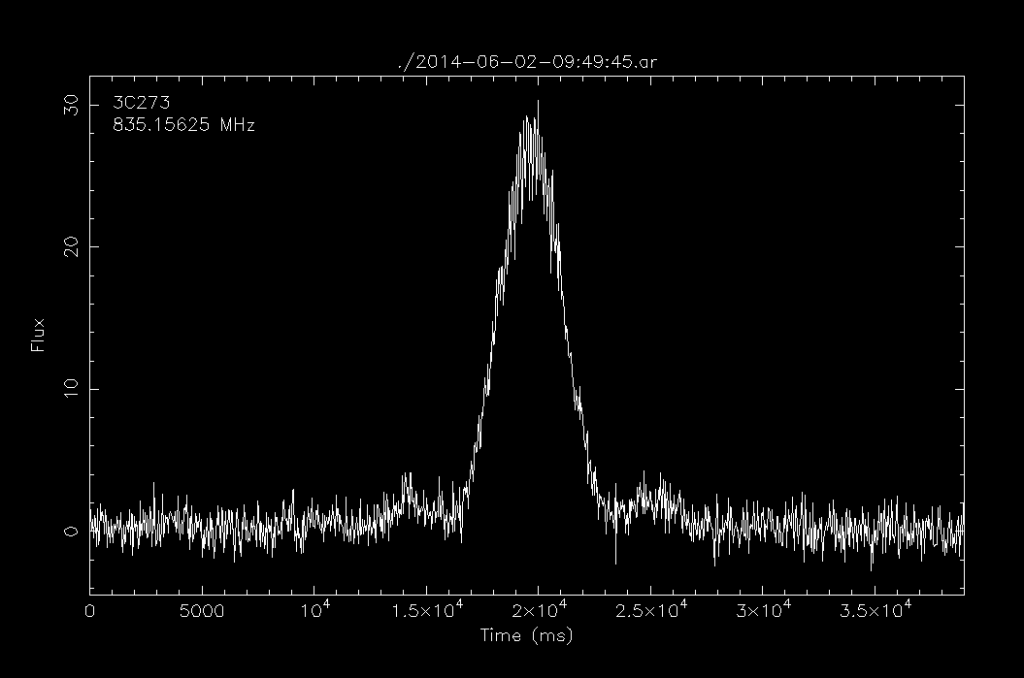Today we have operated UTMOST using the full power of the Molonglo array for the first time.
The figure above shows the bright quasar 3C273 passing through the “tied array beam” at Molonglo using the UTMOST correlator.
The tied array beam uses 88 of the telescope’s 352 antennae to produce a much narrower beam than the primary one — using a technique known as interferometry.
The beam is only a few seconds wide in time on the sky — seen clearly here as 3C273 transits through the tied beam on the meridian.
This is an important milestone on the way to producing many tied-array beams — or “fanbeams” on the sky within the primary beam of the telescope — all of which can be search for Fast Radio Bursts.
Well done to Andrew Jameson and the UTMOST team!
